24 November, 1999
Day of deployment. Finally the waiting is over. The combination of
available helicopters, weather and personnel has come together in our favor
to move our group to the acclimation point, Fang Glacier 9000í. It will
take two helo shuttles of people and gear to get us all there. The first
load takes Phil, Jessie and Chas, our mountaineer and safety person. I go
in the second shift with Jean and Jeff.
The glacier is a small one located about 1500í below the crater in a draw of
rock outcroppings. Here we will sit for 48 hours while our bodies acclimate
to the altitude. Coming up from sea level so fast is hard on all of us and
no one goes unaffected. Everyone gets a headache. One person in our party
is affected more and spends the night having trouble keeping food or water
down. AMS (Acute Mountain Sickness) can be a serious problem anywhere, but
here help is a long way away. Mild symptoms are light headiness and
headache, more severe are nausea, loss of coordination followed by pulmonary
edema, which is very serious and has led to death. Remember our training
with the Gamow bag; the bag is with us just in case. Luckily no one in our
party gets beyond the nausea stage and by the second day everyone is feeling
fine.
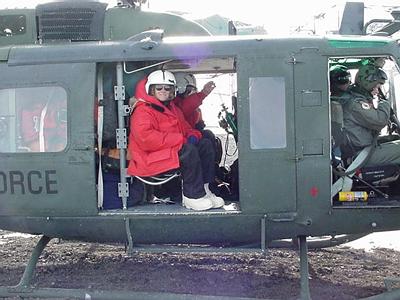
Suited up and ready for take off, full cold weather clothes, helmet and camera ready.

From the helo a look back at the Ross Sea (what you see in blue) the sea ice (in white) and the beginning of the glacier (in the foreground) The helo ride is a thrill in itself, itís hard to concentrate on taking pictures when all I want to do is experience the ride.
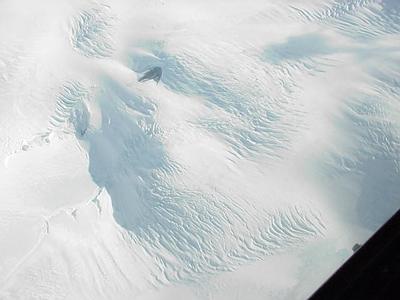
Topside view of glacier topography from the helicopter.
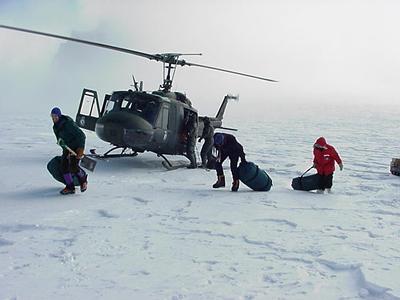
The helo lands and we unload as fast as we can. Because of the cold the helo doesnít stop itís motors, just waits for us to off load and then returns to Mcmurdo.
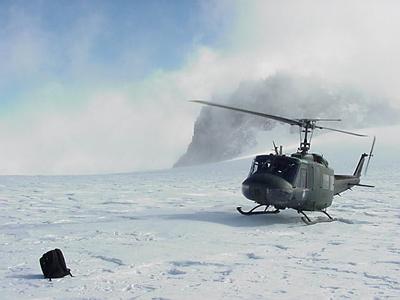
The helo leaves. Good bye to our link to Mcmurdo, warmth, connection to the world, flush toilets and showers.
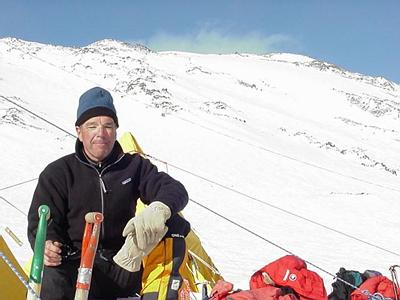
Chas Day is our mountaineer and safety personnel who will stay with us while we are on the glacier.

The camp on Fang Glacier. These are Scott tents, after the design used by earlier explorers. Sturdy and good for this environment, they are anchored to the snow and remarkably cozy inside. We have three of these tents to share. One is set up with the kitchen; the other two are sleeping tents,
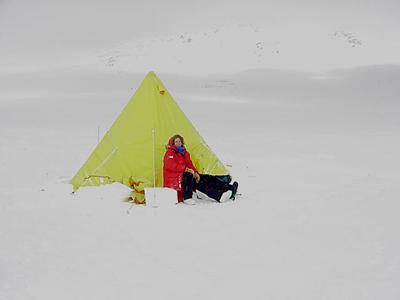
This is the tent I will call home for the next two nights. I bit tight with three of us, but comfortable. Walking on the glacier is easy, the surface is wind blown but flat. The ice crunches under our feet and you can hear the echo of people walking several hundred feet away.
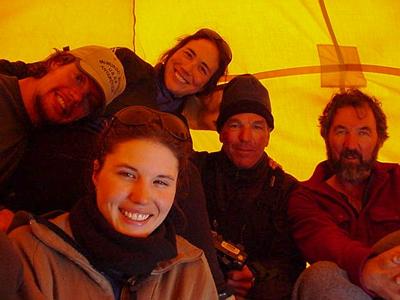
A group picture of all of us in the cook tent eating dinner. A tight squeeze for six, but when it is Ė20oC outside we make room for everyone. The cook tent is the place to be; with the stoves going it is just like home.

No running water here. We have to melt the snow for drinking water and fuel is limited. Rubbing the dishes in the snow is how we clean them.
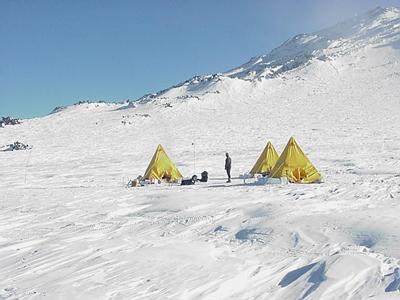
The first night is rough, all of us have headaches and all go to bed directly after dinner, but we wake to this in the morning. A beautiful day on the glacier.
Contact the TEA in the field at
.
If you cannot connect through your browser, copy the
TEA's e-mail address in the "To:" line of
your favorite e-mail package.
|
